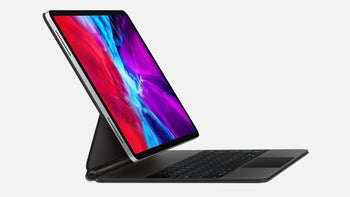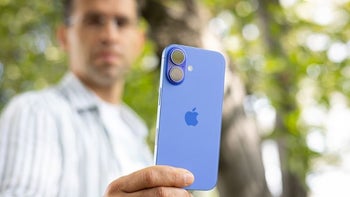Apple iPad Pro users might need to memorize these trackpad gestures

With every iteration of the Apple iPad Pro, the company comes closer and closer to getting consumers to seriously consider the device as a replacement for a laptop. This year, Apple is adding trackpad and mouse support starting with the iPadOS 13.4 update due out later this month. Today, Apple introduced its new 11-inch and 12.9-inch iPad Pro models along with the new Magic Keyboard. The latter uses magnets to connect to one of the new tablets, features backlit keys, and is equipped with the aforementioned trackpad. Priced at $299 for the 11-inch tablet and $349 for the 12.9-inch version, the Magic Keyboard is expected to be released in May and will also work with the 2018 iPad Pro models.
Craig Federighi, Apple's SVP of Software Engineering and the man known for the botched Face ID unveiling back in September 2017 (although it turned out that the feature did exactly what it was designed to do) released a video to The Verge that shows how the trackpad works. The cursor is a little circular dot that the company says makes the most sense for the iPad. The dot, which resembles the tip of a finger, will not appear on the display at all times, only showing up when the trackpad is touched.
The Apple iPad Pro trackpad supports multitouch gestures
Just like the pointer on your PC changes into a hand, a little arrow or a cursor depending on what the pointer is being aimed at, the cursor on the iPad Pro does the same thing. But with the iPad, the cursor changes shape in order to cover the size of the touchable button that you're pointing at. These animations can be disabled. The cursor will allow users to navigate a spreadsheet and should make it easier for iPad Pro users to manipulate large blocks of text.
/cdn.vox-cdn.com/uploads/chorus_asset/file/19816566/mouseipad.gif)
/cdn.vox-cdn.com/uploads/chorus_asset/file/19816566/mouseipad.gif)
The trackpad will support multitouch gestures like "pinch-to-zoom," and a three-finger swipe will take the user home. Swiping up and holding with three fingers will open the multitask menu; swiping to the left or right will switch between open apps. Clicking on the status apps in the upper right corner of the screen opens the Control Center. Moving the cursor to the bottom of the screen brings up the dock and sliding the cursor all the way to the right side of the screen will open the Slide Over apps. The trackpad can be used to cycle through all of the open apps open for that feature.
Speaking of Slide Over, Apple employs this and split-screen instead of the traditional windows that are used on computers. This doesn't cloud up Apple's message that the iPad Pro can be a viable replacement for a computer. It just means that both a computer and an iPad Pro might be able to get a user to where he wants to go, but both have slightly different paths to get there. And the trackpad doesn't magically turn the iPad Pro into a computer. While Apple continues to promote the iPad as a laptop substitute, the manufacturer still makes the tablet's UI distinct from those found on desktop and laptop PCs.
Where Apple says that it has the biggest advantage over laptop and desktop PCs is with its speed. The A12Z chipset that powers the new iPad Pro models features an octa-core CPU and an octa-core GPU. While Apple's hardware is making the company's premium tablet more computer-like than ever, the dedicated iPadOS is also helping Apple's efforts to have consumers view the iPad Pro as a computer substitute. And as Federighi says, "“If you like what you’ve seen us do with iPadOS, stay tuned, we’re going to keep working on it."













Things that are NOT allowed: